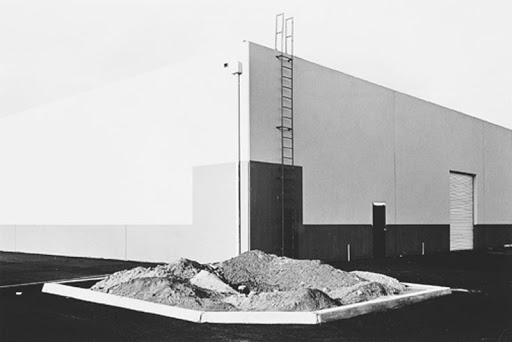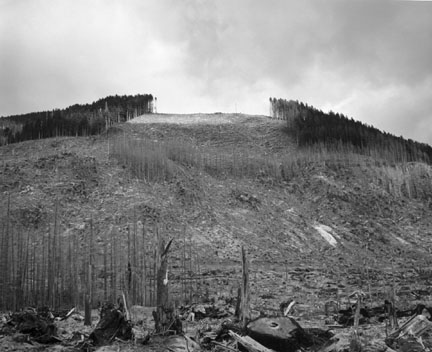“New Topographics: Photographs of a Man-Altered Landscape” was an exhibition that epitomised a key moment in American landscape photography. Many of the photographers associated with new topographics including Robert Adams, Lewis Baltz, Nicholas Nixon and Bernd and Hiller Becher, were inspired by man-made subjects. Their aim was to find the beauty in the plain and ‘ugly’ streets of America. It was a reaction to the conflict which took place over the late twentieth century, which saw outrage that natural landscapes were being replaced with large, industrial buildings.
FRANK GOHLKE
Frank Gohlke ( 1942 – ) is an American landscape photographer. Gohlke was one of ten photographers selected to be part of “New Topographics: Photographs of a Man-Altered Landscape”, the landmark 1975 exhibition at the International Museum of Photography at George Eastman House. During a career spanning nearly five decades, Gohlke has photographed grain elevators in the American midwest; the aftermath of a 1979 tornado in his hometown of Wichita Falls, Texas; changes in the land around Mount St. Helens during the decade following its 1980 eruption; agriculture in central France; and the wild apple forests of Kazakhstan. Gohlke′s photographs have been exhibited at the Museum of Modern Art; the Art Institute of Chicago; the Cleveland Museum of Art; the Minneapolis Institute of Arts; the Amon Carter Museum; and the Museum of Fine Arts, Houston.
IMAGE ANALYSIS

This photograph by Gohlke is entitled ‘Grain elevator under repair‘, which avoids any confusion about what the photograph is of. The lighting used in this image is natural and appears to be coming from the left hand side due to the way the various shadows are falling across the image. The brightest parts of the photograph are the white portions of the cars, which directly contrasts with the dark tones of the road and the shadows. There is a lot of repetition present in this photograph, which can be seen in the vertical lines in the background of the image, as well as the horizontal lines of the car tops, the workmen in the background and the pavement and road. The contrast between both the vertical and horizontal lines creates an interesting composition for the viewer, with each one seemingly juxtaposing each other. The shapes in this photograph are mostly geometric, for example the cement slabs on the pavement split up by straight lines and the large cylinder – like shapes in the background of the image. There is hardly any negative space in this photograph, as the whole frame is taken up by either the building in the background or the cars in the foreground. The smooth and slick texture of the cars directly contrasts with the rough and harsh texture of the pavement as well as the building in the background. Gohlke has captured this image in black and white which allows for certain features of the image, such as the contrasting tones and small details like the cracks in the building to be accentuated and exaggerated.






